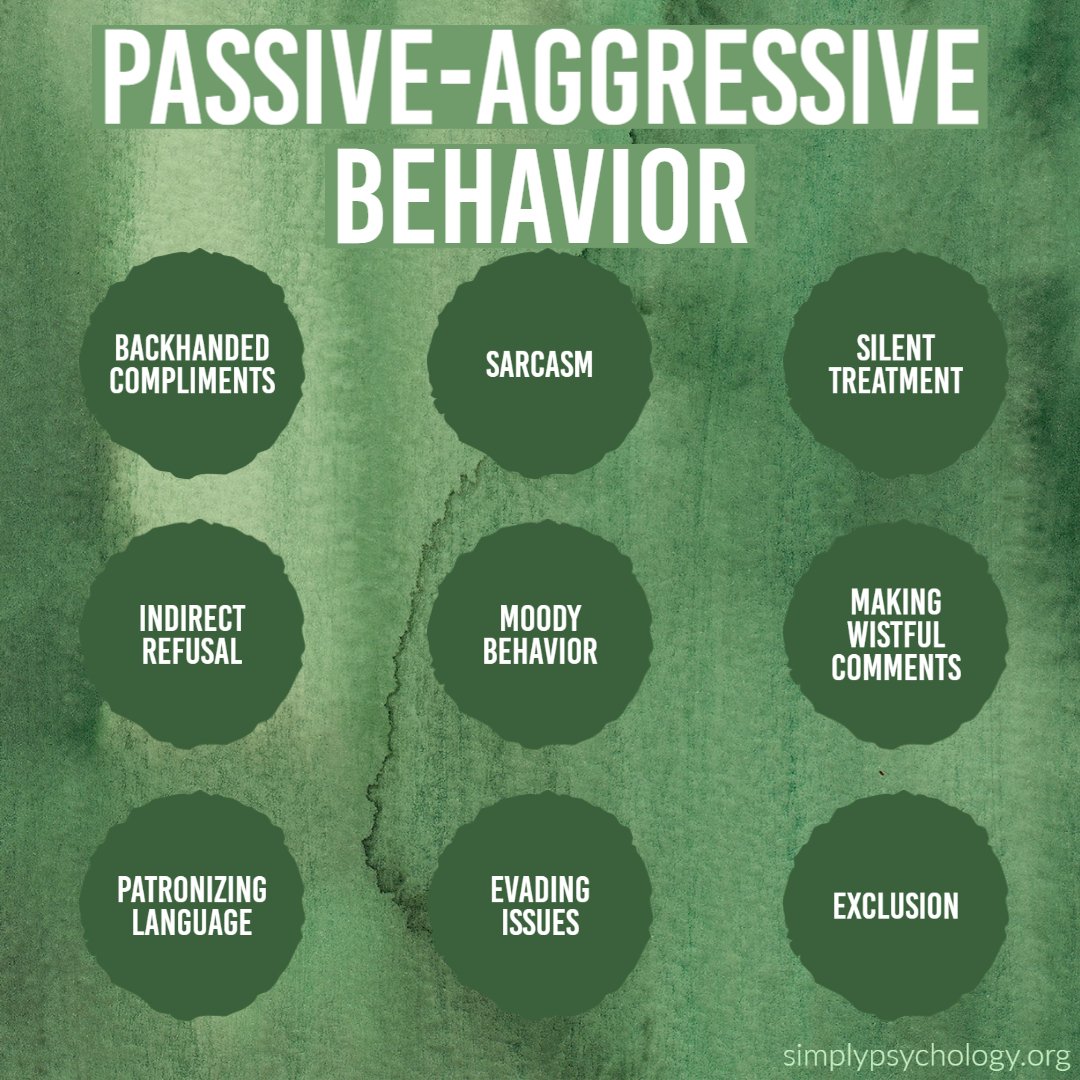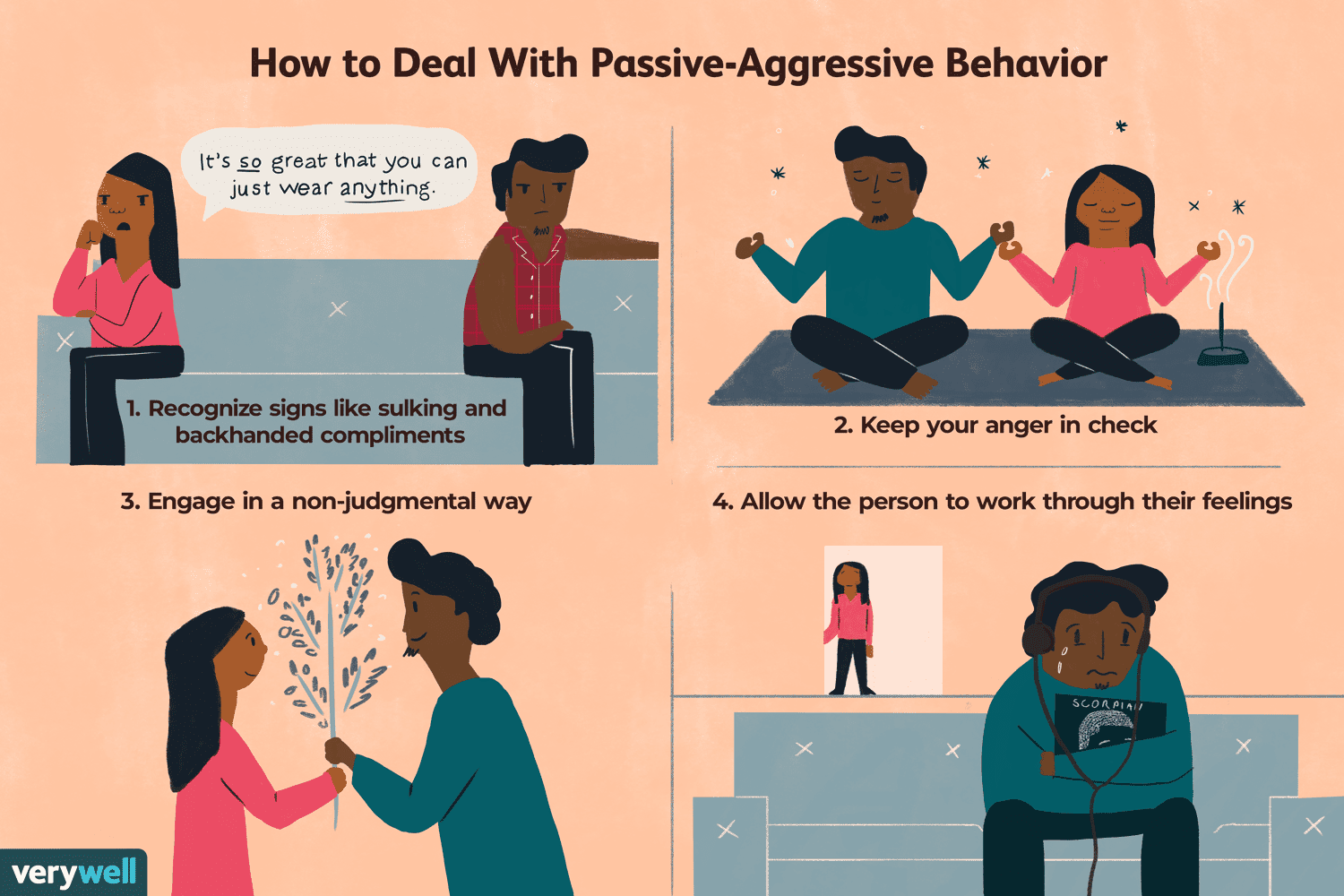Contents
- Navigating the Challenges of Passive-Aggressive (and/or) Narcissist Husbands
- Recognizing the signs of passive-aggressive behavior
- Impact of passive-aggressive Behavior on the Relationship
- Passive-aggressiveness vs. Narcissism
- Covert Passive-Aggressive Narcissists
- Communication strategies for dealing with a passive-aggressive husband
- Setting healthy boundaries and expectations
- Developing empathy and understanding
- Seeking professional help and counseling
- Building a support network
- Self-care and self-reflection
- Making decisions for your own well-being
- Conclusion
Understanding passive-aggressive behavior in husbands is crucial for navigating the challenges that may arise in a relationship. Passive-aggressive behavior is characterized by indirect expressions of anger, hostility, or resistance toward others. In the context of a marriage, this behavior can manifest in various ways, such as silent treatment, sarcasm, procrastination, withholding affection, or making subtle jabs and backhanded compliments.
Passive-aggressive behavior is often a defense mechanism that individuals resort to when they feel unable to express their true feelings or concerns directly. In the case of a husband, this behavior may stem from feelings of powerlessness, fear of conflict, or a desire to maintain control over a situation without openly addressing the underlying issues.
By understanding the underlying motivations behind passive-aggressive behavior, you can approach the situation with empathy and compassion. Remember that it is not a personal attack on you, but rather a reflection of your husband’s own internal struggles.
Recognizing the signs of passive-aggressive behavior
Recognizing the signs of passive-aggressive behavior is crucial in navigating the challenges of a passive-aggressive husband. This behavior can be elusive and difficult to pinpoint, making it important to be aware of the subtle signs that may indicate passive-aggressive tendencies.

One of the most common signs is indirect communication. Passive-aggressive individuals often struggle to express their feelings or concerns directly, opting instead for passive methods such as sarcasm, silent treatment, or subtle jabs disguised as jokes. They may appear cooperative on the surface but harbor a hidden agenda or resentment underneath.
Another sign to watch for is a pattern of avoidance and procrastination. Passive-aggressive individuals may conveniently forget or delay completing tasks they were assigned, making excuses or blaming others for their inability to follow through. This behavior is often a way to express their resistance or frustration indirectly.
Passive-aggressive behavior can also manifest as subtle acts of sabotage or intentional inefficiency. They may intentionally perform a task poorly, make mistakes, or conveniently “forget” important details, causing frustration and inconvenience to others.
Passive-aggressive individuals often display a consistent pattern of making backhanded compliments or veiled insults. These remarks may seem harmless on the surface but carry an underlying tone of criticism or disapproval, leaving the recipient feeling confused or hurt.
Impact of passive-aggressive Behavior on the Relationship
Passive-aggressive behavior can have a significant impact on a relationship, causing strain and frustration for both partners involved. It is important to understand the effects of this behavior in order to navigate the challenges it presents.
One of the main impacts of passive-aggressive behavior is the breakdown of effective communication. When a partner consistently avoids direct confrontation or expresses their feelings indirectly, it becomes difficult to address issues and find resolutions. This can lead to a lack of trust and understanding between both individuals, creating a cycle of unresolved conflicts and unmet needs.
Passive-aggressive behavior often creates a toxic atmosphere within the relationship. The constant underlying tension and subtle acts of resistance can erode the emotional connection and intimacy between partners. It can leave the non-passive-aggressive partner feeling confused, hurt, and unsure of how to respond to the passive-aggressive behavior, further escalating the conflict.
Passive-aggressive behavior also hinders problem-solving and compromises within the relationship. Since open dialogue and honest expression of feelings are lacking, finding mutually beneficial solutions becomes challenging. This can create a power imbalance, with one partner feeling unheard or disregarded, leading to resentment and a sense of inequality.
The impact of passive-aggressive behavior may extend beyond the relationship itself. It can affect other areas of life, such as work, social interactions, and overall well-being. The stress and emotional turmoil caused by ongoing passive-aggressive behavior can have negative consequences on one’s mental and physical health, further straining the relationship and overall quality of life.
Passive-aggressiveness vs. Narcissism
Are passive-aggressive people narcissists? There is a growing concern about the prevalence of passive-aggressiveness and narcissism. Though both are sometimes considered synonymous, it is important to understand the distinct differences between the two.
At one extreme, passive-aggressiveness is defined as covert behavior characterized by expressing negative feelings indirectly in an effort to avoid direct confrontation. Examples can include sarcasm, teasing, sulking, neglecting responsibilities, and engaging in non-communicative behaviors. Ultimately, passive-aggressive behaviors are rooted in insecurity and foster unnecessary strife in interpersonal relationships.
On the other hand, Narcissism is a form of self-centeredness that often manifests itself in grandiose thinking, powerful fantasies, and an overall sense of superiority. Narcissists are often preoccupied with their own needs and accomplishments to the exclusion of others and have difficulty empathizing with the emotions of those around them. Such people may come off as rude, aloof, and uninterested at times while maintaining an air of superiority throughout the conversation.
It is important to remember that neither of these traits should be seen as desirable character traits but should rather be dealt with thoughtfully and carefully. Passive aggression does not foster meaningful relationships and narcissism breeds detachment from others. Understanding the difference between the two is the first step towards addressing either problem constructively.
Covert Passive-Aggressive Narcissists
Passive-aggressive narcissism “covert narcissist” is a type of personality disorder characterized by an inability to express anger in healthy, constructive ways and instead lashing out through subtler methods such as passive-aggressive behaviors. A passive-aggressive narcissist will often lack empathy, be highly manipulative, and constantly seek admiration from others. They may also engage in self-sabotaging behavior such as intentionally doing things that will hurt themselves in order to gain sympathy or attention from others.
It is important to recognize the signs of passive-aggressive narcissism early on in relationships in order to protect yourself from their manipulative and potentially harmful tactics. Signs to look out for include:
- subtle criticism
- indirect anger
- refusal to communicate openly
- withholding affection
- silently punishing people they are close to
If you suspect someone in your life is displaying these behaviors, it is best to talk to them about it in a non-confrontational way and explain the effects their behavior is having on your relationship. If they still refuse to take responsibility for their actions or change their behavior, it may be wise to distance yourself from them to protect their emotional well-being. If you’re married to them, well it just may be time for a divorce.
Communication strategies for dealing with a passive-aggressive husband
Dealing with a passive-aggressive husband can be incredibly challenging, as their indirect and subtle behaviors can often lead to frustration and misunderstandings in a relationship. However, effective communication strategies can help navigate these challenges and promote healthier conflict resolution.
- Express your feelings openly: It is crucial to express your emotions and concerns to your husband in a calm and assertive manner. Clearly communicate how his passive-aggressive behaviors make you feel, using “I” statements to avoid sounding accusatory. For example, instead of saying, “You always make snide remarks,” try saying, “I feel hurt when I hear negative comments.”
- Focus on specific behaviors: Rather than attacking your husband’s character, address specific behaviors that are causing issues. By focusing on observable actions, you can avoid getting caught up in personal attacks and maintain a more constructive conversation. For instance, instead of saying, “You’re so passive-aggressive,” try saying, “When you give me the silent treatment, it makes it difficult for us to resolve conflicts.”
- Active listening: Show empathy and understanding by actively listening to your husband. Give him the opportunity to express his thoughts and feelings without interruption. Reflect back on what he says to ensure you fully understand his perspective. This promotes a sense of mutual respect and fosters a more productive conversation.
- Seek professional help if needed: If your attempts at communication do not yield positive results or the issues persist, seeking the guidance of a professional counselor or therapist who specializes in relationship dynamics can be immensely beneficial. They can help facilitate open and honest communication, provide tools for conflict resolution, and offer guidance tailored to your specific situation.
Setting healthy boundaries and expectations
In any relationship, setting healthy boundaries and expectations is crucial, and this holds true when dealing with a passive-aggressive husband. Passive-aggressive behavior can often stem from a lack of clear communication and unspoken expectations. By establishing and enforcing healthy boundaries, you can create a more harmonious and respectful dynamic.
Start by reflecting on your own needs, values, and boundaries. What behaviors or actions are acceptable to you, and which ones are not? Communicate these boundaries to your husband in a calm and assertive manner. Clearly express what you are comfortable with and what you expect from him in terms of communication and behavior.
Be specific and avoid vague statements. For example, instead of saying, “Please be more considerate,” you can say, “I would appreciate it if you could let me know in advance if you are running late for dinner.” By providing specific examples, you give your husband a clear understanding of what you need from him.
Establish consequences for crossing these boundaries. Make it clear that there will be repercussions if your boundaries are disregarded. However, it is important to choose consequences that are reasonable and proportionate to the situation. For example, if your husband consistently ignores your requests to help with household chores, you may decide that you will no longer cook for him until he starts contributing.
Setting boundaries is a two-way street. Encourage open and honest communication where both partners can express their needs and expectations. This allows for mutual understanding and prevents misunderstandings or resentment from building up over time.
Developing empathy and understanding
Developing empathy and understanding is crucial when navigating the challenges of a passive-aggressive husband. It can be difficult to comprehend the underlying emotions and motivations behind their behavior, but it is essential to approach the situation with compassion and patience.
Understand his perspective
One effective strategy is to put yourself in your husband’s shoes and try to understand his perspective. Empathy allows you to see beyond the surface-level passive-aggressive behavior and delve into the deeper emotions driving it. Consider what might be causing him to act in this manner – perhaps he is feeling overwhelmed, insecure, or unheard.
Active listening
Active listening is another essential component of developing empathy. Take the time to truly listen to your husband’s concerns and frustrations without interrupting or dismissing them. Show genuine interest in understanding his feelings and validate his experiences. This will create a safe and supportive environment for open communication, where both parties can express their emotions without fear of judgment or defensiveness.
Mutual understanding.
Engage in open and honest conversations about the impact of passive-aggressive behavior on the relationship. Share your own feelings and concerns, emphasizing that you want to work together to find a resolution. Encourage your husband to do the same, allowing him to express himself without judgment.
Seeking professional help and counseling
When dealing with the challenges of a passive-aggressive husband, seeking professional help and counseling can be an incredibly valuable step toward finding effective strategies for conflict resolution. While it may seem tempting to try to navigate these challenges on your own, the expertise and guidance of a trained professional can make a significant difference in addressing the underlying issues and finding a path forward.
A licensed therapist or counselor can provide a safe and neutral space for both you and your husband to express your thoughts and feelings openly. They can help you both gain a deeper understanding of the dynamics at play in your relationship and identify any patterns of passive-aggressive behavior that may be contributing to conflict.

In therapy sessions, you can learn effective communication techniques and conflict-resolution skills that can promote healthier interactions between you and your husband. A skilled therapist will guide and facilitate discussions, ensuring that both parties feel heard and understood.
Therapy can also help uncover any underlying issues or past traumas that may be influencing your husband’s passive-aggressive behavior. By addressing these root causes, you can work towards healing and creating a more fulfilling and harmonious relationship.
Remember that seeking professional help is not a sign of weakness or failure but rather a proactive step towards finding resolution and creating a healthier dynamic in your marriage. It takes courage and dedication to seek outside assistance, but the potential benefits for your relationship and overall well-being are invaluable.
Building a support network
Building a support network is crucial when navigating the challenges of a passive-aggressive husband. Dealing with passive-aggressive behavior can be emotionally draining and overwhelming, and having a support system in place can provide much-needed guidance, encouragement, and perspective.
First, confide in trusted friends or family members who can offer a listening ear and understanding. They can provide a safe space for you to vent your frustrations and share your experiences. Their outside perspective may also help you gain insights and offer valuable advice on how to handle specific situations.
Consider joining a support group or seeking therapy. Participating in a support group for individuals dealing with passive-aggressive partners can be incredibly beneficial. Connecting with others who have similar experiences can help you feel less alone and provide an opportunity to learn from their strategies and coping mechanisms. Additionally, therapy can provide you with professional guidance tailored to your specific situation, helping you navigate the challenges and develop effective communication and conflict-resolution strategies.
Don’t underestimate the power of self-care. Taking care of your own physical, emotional, and mental well-being is crucial when dealing with a passive-aggressive husband. Engage in activities that bring you joy, reduce stress, and promote relaxation. This can include exercise, hobbies, meditation, or simply spending time with loved ones who uplift and support you.
Consider seeking professional help for your husband’s passive-aggressive behavior. A therapist or counselor can work with both of you to address the underlying issues and develop healthier ways of expressing emotions and resolving conflicts. Having an impartial third party can facilitate open and constructive communication, leading to a stronger and more fulfilling relationship.
Remember, building a support network is not a sign of weakness but a testament to your strength and determination to navigate the challenges of a passive-aggressive husband. Surrounding yourself with understanding and supportive individuals can provide the necessary support and guidance to help you overcome obstacles and work towards a healthier and happier future.
Self-care and self-reflection
When dealing with a passive-aggressive husband, it’s crucial to prioritize self-care and self-reflection. It’s easy to get caught up in the chaos and negativity of the situation, but taking care of yourself is essential for your own well-being and mental health.
Self-care involves engaging in activities that bring you joy, relaxation, and peace. This could include practicing mindfulness or meditation, participating in hobbies or interests that you enjoy, or simply taking time out for yourself to recharge. When you prioritize self-care, you are better equipped to handle the challenges that come with a passive-aggressive spouse.
Self-reflection plays a vital role in navigating these challenges. Take the time to reflect on your own emotions, triggers, and patterns of behavior. Consider seeking therapy or counseling to gain a deeper understanding of yourself and your role in the relationship dynamics. Understanding your own thoughts and feelings can help you respond to your husband’s passive-aggressive behavior in a more productive and assertive manner.
Making decisions for your own well-being
When dealing with a passive-aggressive husband, it is crucial to prioritize your own well-being. One of the challenges in such relationships is the tendency for the passive-aggressive partner to manipulate situations, leaving you feeling unheard or dismissed. It is important to recognize that you have the right to make decisions that prioritize your mental, emotional, and physical health.
Remember that you have a right to be respected and treated with kindness. Don’t allow yourself to be manipulated or silenced by passive-aggressive behaviors. Taking control of your own decisions and well-being is an essential step in navigating the challenges posed by a passive-aggressive husband and finding a resolution in your relationship.
Conclusion
We hope you found our blog post on navigating the challenges of a passive-aggressive husband helpful. Dealing with passive-aggressive behavior can be frustrating and can strain relationships. However, armed with effective strategies for conflict resolution, you can work towards creating a healthier and more harmonious partnership. Remember, open communication, empathy, and setting boundaries are essential elements to resolve conflicts and build a stronger bond. We wish you the best of luck in navigating these challenges, and may your relationship flourish in a more positive and understanding environment.
